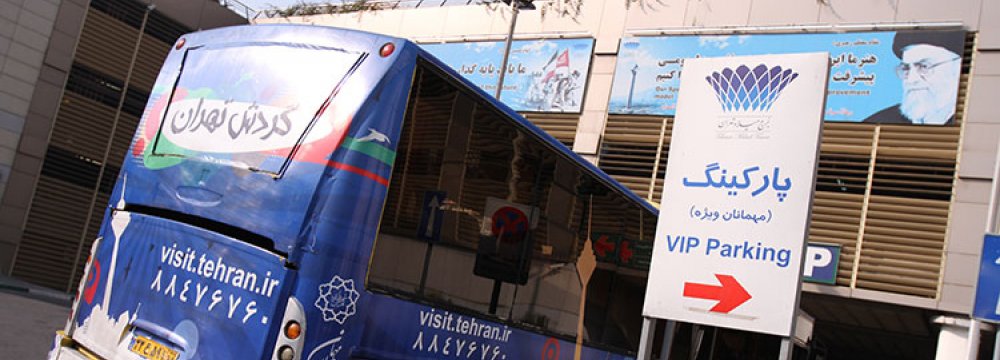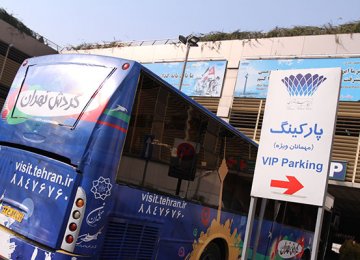Iran Touring and Tourism Investment Company (ITTIC) started its activities 40 years ago, building inns and hotels in 200 different locations of the country, under the title of Jalb-Sayahan ‘tourists attraction’.
Some 15 years ago, to liquidate the company’s debts, 50% of its assets were transferred to the Social Security Organization and the other half was passed to the Civil Servants Pension Fund (CSPF).
Due to dilapidation and the lack of visitors, much of the accommodation was gradually taken out of commission. Still, with 65 hotels and inns, 2,000 rooms, and 40,000 beds, ITTIC remains the largest hotel management company in the country, offering services to tourists and travelers.
Having been designed for a middle income range of travelers, ITTIC hotels are three-star on average. About 60% of the ITTIC’s lodgings are occupied. Some cities have a higher rate of occupancy, while some others have very few occupants, resulting in loss of profit. “We are planning to bring our hotels up to international standards, therefore we must adhere to internationally recognized norms, train human resources, and develop a corporate brand,” director general of ITTIC Mohsen Qarib said in an interview with the Persian daily Taadol.
Tourism activities in Iran are not distributed evenly among the various regions and throughout the year. In periods like the Nowruz holidays or the Fajr festival in early February, the roads that link Tehran to the northern parts of the country are extremely congested, while the southern roads, leading to destinations with a favorable climate, are almost deserted.
Inexpensive Travel
Government policy and tourism officials’ plans should aim to even out the distribution of travels, both in terms of time as well as place. “Other than ‘inexpensive accommodation’ we also advocate ‘traveling anytime and anywhere’ as our slogan.”
“A few years ago we introduced the concept of a travel-card with a registered National Travel Card Company,” Qarib said. Based on an agreement between ITTIC and government organizations, 3 million travel cards were issued to be charged by organizations and given to their employees, however, the initiative was short-lived. Of the 3 million travel cards, only 300,000 are currently active; the rest were never recharged.
ITTIC offered 20% discount to travel card owners, while the government organizations funded the cards by reduction from the employees’ in installments. This was more like a loan, a travel loan. “Through the media, we intend to bring about public awareness about our slogan and encourage people to travel anytime through the year and anywhere throughout the country.” Due to extremely high tariffs of advertisement in the Islamic Republic of Iran Broadcasting (IRIB), ITTIC is unable to promote its programs. As among national movements, such promotion should naturally be included in IRIB programs; thus the country’s tourism will be promoted.
Many satellite channels and networks have programs and series on tourism and travel. “Why shouldn’t we have such programs in Iran?” Since broadcasting facilities cannot be owned by the private sector, it is upon IRIB to organize tourism programs.
Even in newspapers, advertisement is sometimes unjustifiable. Hotels do not make much money to spend part of it on such advertisements. Thus it is only tour-organizers and travel agencies that spread awareness. They rent hotel rooms, charter planes, and take travelers to tourist attractions; but not so in Iran.
Shortcomings
Everywhere in the world, there are discounts offered on group tickets either for trains or for planes, Iran should consider implementing a similar regime. This appears not to be a policy of the Islamic Republic of Iran Railway.
Buses should be better equipped to host tourists; there is no distinction between ordinary buses and tour buses. There is a shortage of well-trained, skilled, and eloquent tour guides. These shortfalls contribute to hotels and accommodations not being profitable except for a few famous tourist destinations such as Mashhad and some northern cities.
Environmentalists, on the other hand, argue that well-promoted destinations will be swarmed by an overwhelming surge of visitors who seem not to care much about preserving the very sites that drew them there in the first place.
There is unlimited private car access to most natural or historical sites, which overwhelms the setting, causes damage, takes away from the ambiance, and compromises the experience of the site. Here the government and responsible organizations should step in, set standards, and educate the public. “Our programs, revolving around inexpensive trips and distribution of travels, can be of help in this regard. We are planning to interact with tourism holding companies, aviation organizations, Raja railway transport company, and banks to promote tourism. Our hotels and those using our brand will offer discounts up to 50% during low seasons, “ the ITTIC official said.
Tourism promotion involves many people, organizations, and companies. All assets and resources should be safeguarded, particularly at such a time when the country is under sanctions,





